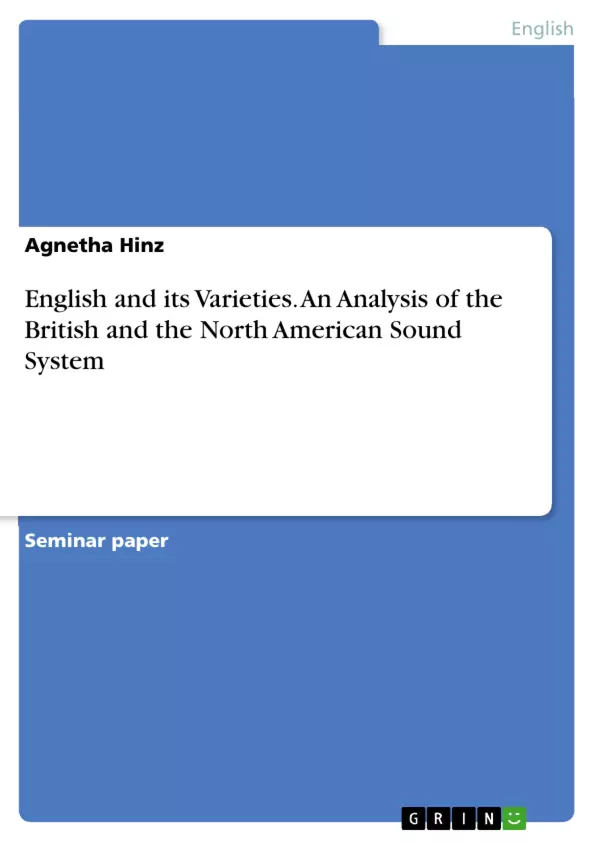Regarding the English language, there are wide variations in pronunciation, including dialects or accents due to differences within the age, the gender, or the geographical origin of the speaker. But there are also variations that are defined as standard pronunciation. Two of them, concerning the English language, are known as the Received Pronunciation (RP), which presents the Standard British accent, and the General American accent (GA), which presents the standard pronunciation in North America. Nowadays those variations face the people amongst others by the spoken media, like television or radio. Especially English learners who were, or still are predominantly confronted with the British English Pronunciation due to their academic education tend to have an issue with the unfamiliar General American pronunciation.
To illustrate the differences between the General American accent and the Received Pronunciation in British English, this paper dwells on the individual parts that finally form a specific pronunciation type: The differences within the vowel and consonant system, as well the differences within the articulation with focus on the stress of syllables.
Inhaltsverzeichnis (Table of Contents)
- INTRODUCTION
- VARIETIES OF ENGLISH
- Received Pronunciation - the Standard British accent
- American English
- VARIETIES OF THE SOUND SYSTEMS - A COMPARISON
- The Vowels
- The RP vowel system
- General American English vowels: differences from RP
- The missing phoneme /p/
- The GA consistency of the phoneme /æ/
- Diphthong changes: /ǝʊ/ vs. /oʊ/
- The Consonants
- The RP consonant system
- The General American English consonants: differences from RP
- Rhotic vs. non-rhotic accent
- Dark // vs. Clear /I/
- Variations of /t/
- Differences in articulation: stress
- The Vowels
- CONCLUSION
- BIBLIOGRAPHY
Zielsetzung und Themenschwerpunkte (Objectives and Key Themes)
This paper explores the differences between the Received Pronunciation (RP) and General American English (GA) accents. The main objective is to analyze the distinct features of these two standard pronunciations within the English language. This paper focuses on the specific sound systems of both accents, including vowels, consonants, and differences in stress patterns. The key themes examined include:
- The historical development of RP and GA
- The influence of geographical variations on pronunciation
- The role of standard pronunciations in media and education
- The contrasting features of the vowel and consonant systems
- The impact of stress patterns on articulation
Zusammenfassung der Kapitel (Chapter Summaries)
The paper starts with an introduction, outlining the significance of phonetics and phonology in understanding language variation. It introduces the concept of standard pronunciations, specifically RP and GA, and their impact on English learners. The second chapter focuses on the historical development of the two standard accents, discussing their origins, geographical spread, and social connotations. Chapter three delves into the differences in the sound systems of RP and GA, specifically focusing on vowel and consonant variations. This chapter examines key features like the presence or absence of specific phonemes, diphthong changes, and differences in articulation.
Schlüsselwörter (Keywords)
The main keywords and focus topics of this paper include Received Pronunciation, General American English, phonetics, phonology, vowel system, consonant system, standard pronunciation, regional variation, stress patterns, and articulation.
- Quote paper
- Agnetha Hinz (Author), 2013, English and its Varieties. An Analysis of the British and the North American Sound System, Munich, GRIN Verlag, https://www.grin.com/document/302897



